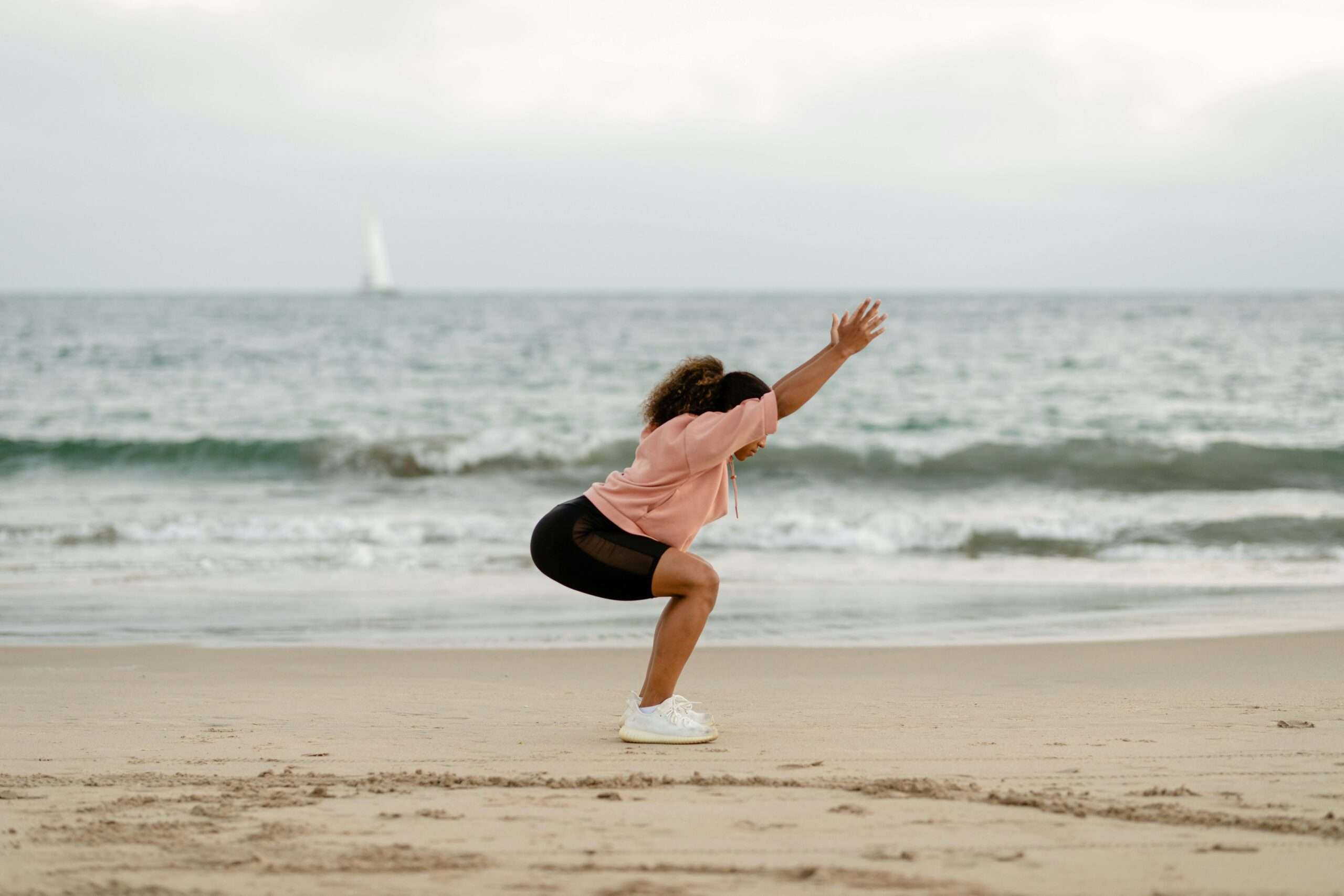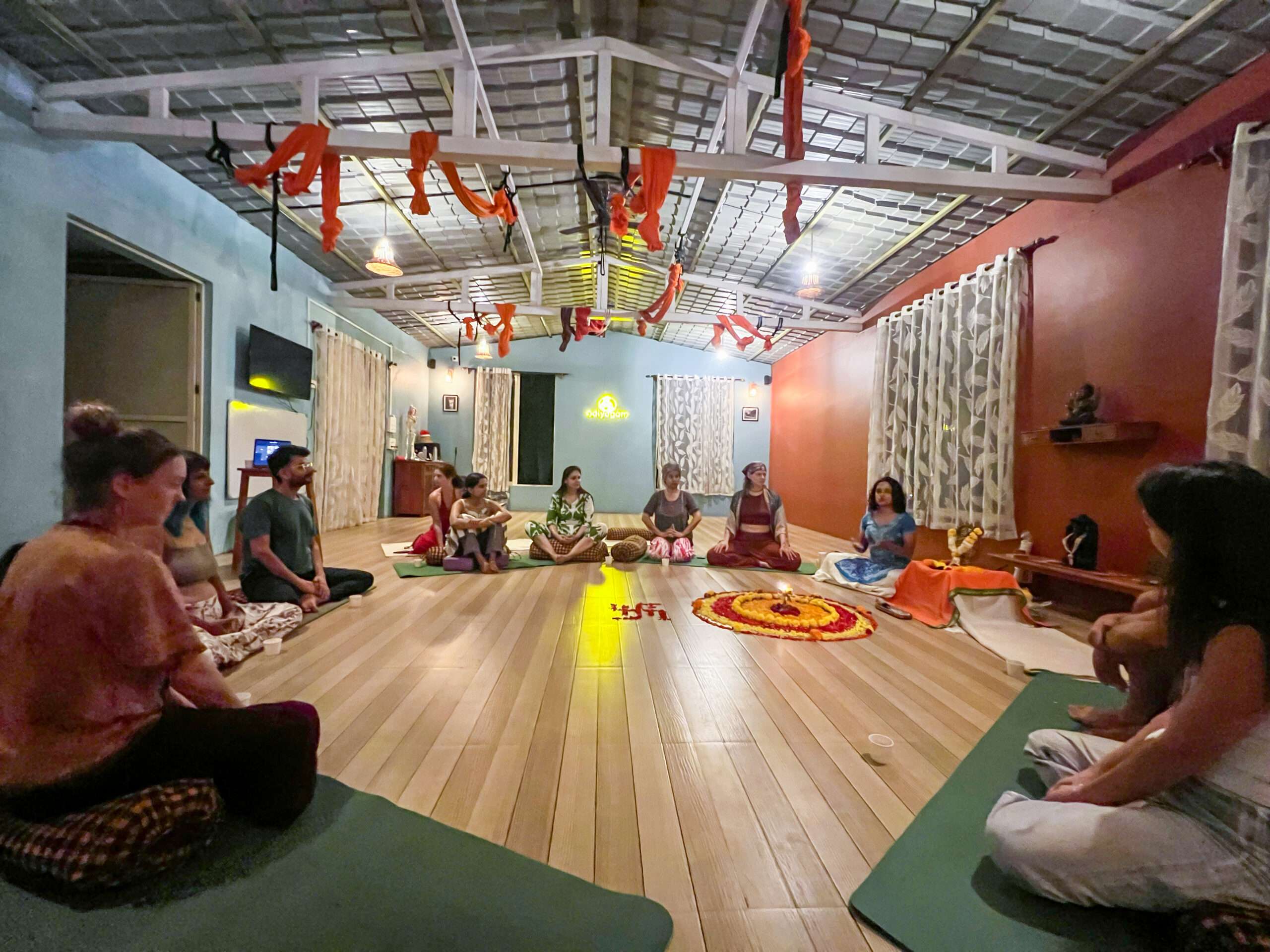If you are craving an experience that drives deep mental clarity, growth, and self-introspection, an Aerial Yoga TTC in Goa can be the best way to go about it. Located amidst the scenic beauty of peaceful sunsets, palm tree-lined golden beaches, and mesmerising natural cover, Goa offers the perfect atmosphere to indulge in a fun activity such as your aerial yoga. Aerial yoga, also known as Flying Yoga or Anti-Gravity Yoga, is a modern and contemporary type of yoga that brings together acrobatics, dance, yoga asanas, and other elements while being suspended in the air.
The yogi is made to relax with the support of aerial tools such as hammocks, ropes, swings etc. while he is performing the yoga postures. The experience is elevated by the inculcation of sensory elements such as good music in the background, aroma therapy, and even customized yoga flows designed to match the practitioner’s needs. The end goal is to find enjoyment, relaxation, and therapeutic benefits of aerial yoga by targeting specific asana practices.
What Does an Aerial Yoga TTC in Goa Include
Asana practice
– Aerial yoga courses Goa, include asana practice specifically designed to serve the purpose of aerial yoga. The traditional yoga asanas are modified so that the practitioners can perform them comfortably on the hammocks while deriving the maximum benefits from their practice. For instance, asanas like Surya Namaskar (Sun Salutations), Plank poses, Down ward facing dog pose, etc., are taken up from traditional yoga and modified so that they are practically performed mid-air over the hammocks.
Teaching Methodology
At an Aerial Yoga TTC in Goa, you will be learning about the appropriate teaching methodology for aerial yoga sessions. In addition to learning the correct alignment of the yoga postures, you will be learning about voice projection and queuing techniques. You will also learn to design and plan yoga sequences and classes for various levels of practitioners.
Breath Work Regulation
The aerial yoga practice includes breath work regulation and breathing techniques, which are an essential part of practising aerial yoga. Breath is one of the eight limbs of yoga, and when one is doing aerial yoga, breath becomes an area of central focus. Better breath work regulation will support the body in inversions and also train the body to adapt to better breath control and lung capacity while hanging upside down.
Safety Guidelines
The students learn about the safety guidelines and rigging, which is an essential part of aerial yoga. They are taught about assessing the ceiling strength, installation of aerial yoga props like swings, hammocks, etc, and also understanding how different body types react to suspension. When it comes to successfully practising and teaching aerial yoga, safety is always the first priority.
Mudgar Training & Ice Plunge
At yoga schools like AdiYogam located in Arambol, North Goa, the experience of Aerial yoga TTC is enhanced by including activities such as Mudgar strength training and ice plunge sessions. These activities not only push the body’s physical limits but also inspire it to come out of its comfort zone and experience yoga as a therapy.
Benefits of Aerial Yoga
Relief From Back Pain
One of the most captivating benefits of practising aerial yoga is the relief people find from intense back pain. Aerial yoga decompresses the spine and gently stretches the body with the help and support of the hammock. The whole practice is designed to support the body in performing asanas which one would otherwise find difficult to do it on the yoga mat.
Improves Core Strength
Practicing aerial yoga eventually and certainly helps with the improvement of core strength. It challenges the body in various yoga asanas and also promotes balance. Since all the yoga postures are performed on the hammock, which keeps swinging, the yogi has to consciously manage his score and activate his upper body muscles, which might be otherwise overlooked in ground yoga.
Boosts Flexibility
Yoga is the champion of flexibility, and Aerial yoga takes this one step further. When the practitioner is stretching his body in various asanas while being suspended in the air, he not only finds cathartic release of stress by stretching, but also the body’s weight is suspended which reduces unnecessary strain on joints and muscles.
Promotes Mental Clarity
Aerial yoga or flying yoga promotes mental clarity. When the body is suspended in the air, being delicately balanced over a hammock that is unstable, the mind automatically becomes more aware and mindful. The aerial yoga sessions thereby enhance the focus of the practitioners and cultivate mental clarity and the ability to focus on one thing properly at a time.
Facilitates Blood Circulation & lymphatic Flow
Practicing aerial yoga facilitates better blood circulation and lymphatic flow. The reason is that aerial yoga encourages inversions and poses in which the body is hanging upside down in addition to being suspended. So this leads to increased blood flow towards the brain and the upper body, encouraging better blood circulation and lymphatic flow.
Boosts Confidence
Inversions during suspension is what makes aerial yoga fun as well as challenging. Sometimes hanging the body upside down can be intimidating in the beginning. But eventually, with practise, the Yogis learn to balance their body and control their breath work in inversions. This builds trust and helps people to overcome their fears, leading to increased confidence and self-trust.
Conclusion
Whether you are a curious beginner who wants to try aerial yoga for the fun of it or a religious yoga practitioner who wants to take up Aerial yoga as a professional pathway, enrolling in an Aerial yoga teacher training course in Goa can be an effective decision. Learning from traditional Indian Yoga Masters like Bharat Ram ji from AdiYogam will help you approach aerial yoga with confidence and accuracy. His experience in undertaking 100 plus specialised aerial yoga sessions in Goa, alongside his unique instruction and added offerings like Mudgar training, ice plunge sessions, sound healing etc., can elevate your aerial yoga teacher training practice.




